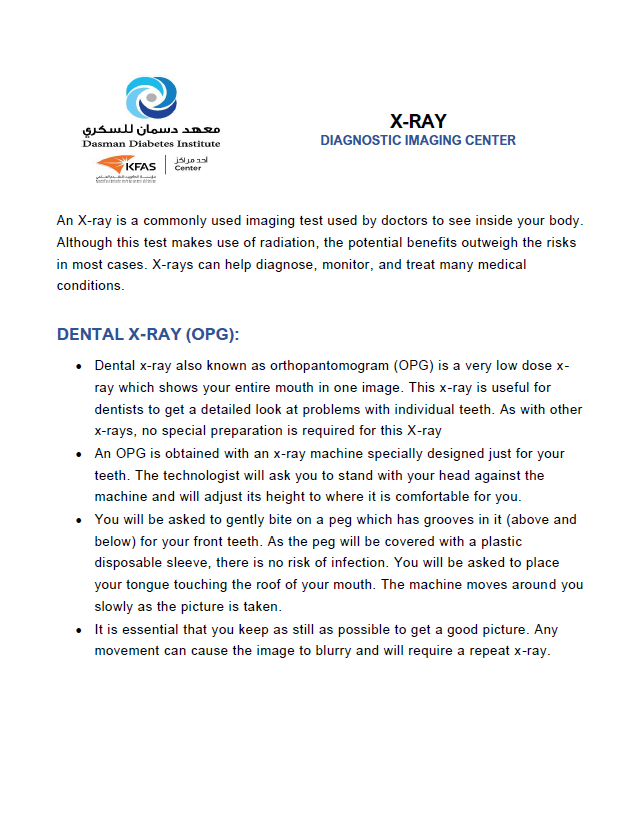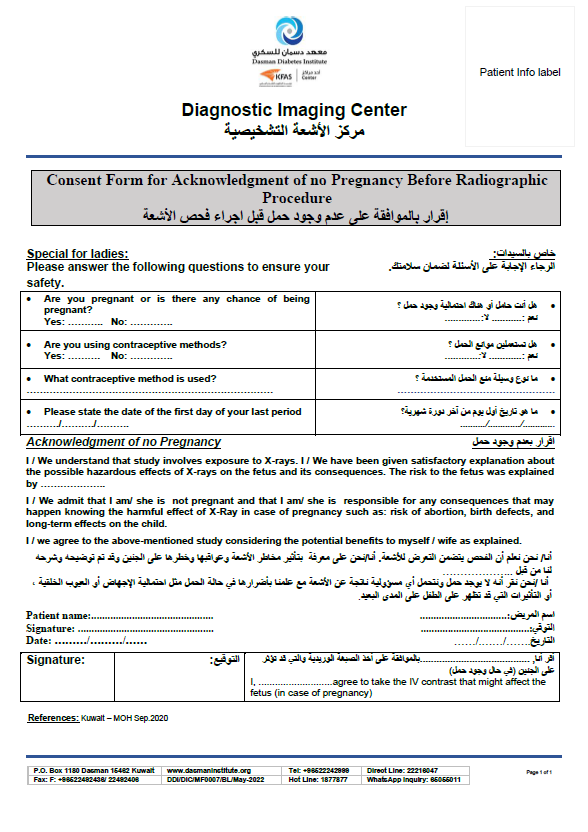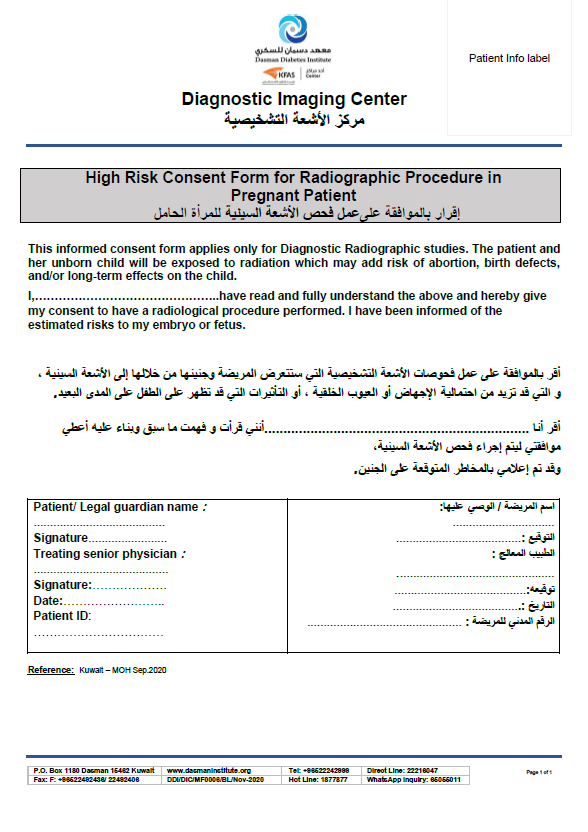An X-ray is a commonly used imaging test used by doctors to see inside your body. Although this test makes use of radiation, the potential benefits outweigh the risks in most cases. X-rays can help diagnose, monitor, and treat many medical conditions.
Dental X-ray (OPG)
- Dental x-ray also known as orthopantomogram (OPG) is a very low dose x-ray which shows your entire mouth in one image. This x-ray is useful for dentists to get a detailed look at problems with individual teeth. As with other x-rays, no special preparation is required for this X-ray
- An OPG is obtained with an x-ray machine specially designed just for your teeth. The technologist will ask you to stand with your head against the machine and will adjust its height to where it is comfortable for you.
- You will be asked to gently bite on a peg which has grooves in it (above and below) for your front teeth. As the peg will be covered with a plastic disposable sleeve, there is no risk of infection. You will be asked to place your tongue touching the roof of your mouth. The machine moves around you slowly as the picture is taken.
- It is essential that you keep as still as possible to get a good picture. Any movement can cause the image to blurry and will require a repeat x-ray.
What to bring on the day of your appointment:
Please bring your x-ray request, civil ID and insurance card (if any) to the reception.
Preparation
- Usually, no specific preparation is required for X-rays.
- For females, in the reproductive age group, it is better to get your x-ray done within 10 days of the onset of your menstrual period.
On the day of the appointment
- Please arrive at the Diagnostic Imaging Reception at least 15-20 minutes before your test. This allows plenty of time for the registration process.
- Parent or guardian of patient younger than 16 years of age must accompany the patient.
- Kindly inform the receptionist/technologist about any implants or pregnancy. In certain cases of pregnancy or possibility for pregnancy, you will be asked to fill a consent form.
- For some x-ray exams, you will be asked to change into a gown. In addition to this, you may also be asked to remove jewelry, eyeglasses, dentures, or any metal objects that might interfere with the images in the region of interest. Lockers are provided to store your belongings while you get your x-ray taken. It is advisable that you leave all your valuables at home.
- You will be instructed on how to position yourself for the x-ray. You will be asked to stand, sit or lie down in front of a specialized plate with sensors while a large camera facing the plates makes the exposure. Usually, multiple views are taken in different positions for the same body part. It is very important to hold very still to get clear pictures. For certain x-rays, you may be asked to hold your breath to get a good image.
- As this modality involves radiation, lead aprons and protective wear will be used on your body appropriately depending on the region that is being imaged.
Generally, examinations take about 10 to 20 minutes to complete.
After your test
- After your X-ray, you can resume your normal activities.
- Our radiologists will interpret your X-ray images and make a report. You will be provided with a CD of your X-ray images. For dental x-rays, the image will be sent to your your DDI doctor by DICOM, or you will be given a CD following the procedure to take to your doctor.
- Please stop by the reception to get your card, which, you will produce along with your civil ID to receive your results. Our reports are generally dispatched between 12:00 – 2:30 pm only on working days.
To print the instructions on this page, please click on the button below.
Contact Us
For any inquiries, cancellations or for rescheduling your appointment, please contact us at
Call Center: +(965) 1877 877 ext.: 7000, 7001
Direct Line: +(965) 2221 6047
WhatsApp: +(965) 6505 5011






